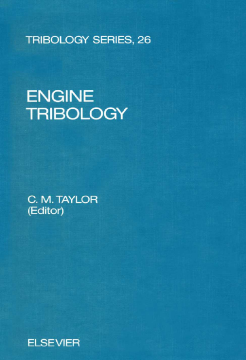
Additional Information
Book Details
Abstract
Customer expectations and international competition are obliging car and commercial vehicle manufacturers to produce more efficient and cleaner products in shorter product cycle times. The consideration of Engine Tribology has a leading role to play in helping to achieve these goals. Specific areas of interdisciplinary interest include: design influences on fuel economy and emissions; new materials (ceramics, steels, coatings, lubricants, additives); low viscosity lubricants; and low heat rejection (adiabatic) engines.
This volume gives a detailed and current review on some basic features of tribology particularly associated with internal combustion engines such as: lubrication analysis relevant to plain bearings, Hertzian contact theory and elastohydrodynamic lubrication associated with cams and followers and friction and wear in a general context. Several chapters examine engine bearings, valve trains, (cams and followers) and piston assemblies. For each machine element a background introduction is followed by design interpretations and a consideration of future developments. The important topic of materials, solids and lubricants is focused upon in the concluding chapters.
The work will be of interest to engineers and researchers in the automobile, automotive products, petroleum and associated industries.
